On The Job as a police patrol officer: Unpredictable high-risk work that tests brains and brawn
In a series where Channel NewsAsia journalists try working in some of Singapore’s essential but underappreciated jobs, Tang See Kit joins two police officers on patrol and walks away with a firmer belief that the responsibility of keeping Singapore safe is not for the faint of heart.
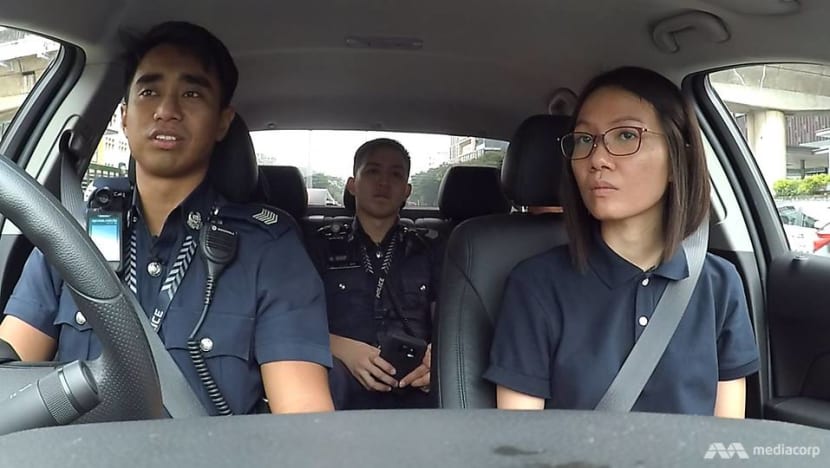
Channel NewsAsia's Tang See Kit with police officers from Geylang Neighbourhood Police Centre.
SINGAPORE: “Man in black. He’s been following us.”
We had just walked past the junction of Geylang Lorong 22 and Guillemard Road when Sergeant (SGT) Kamal Aziz alerted us.
I turned to my right and was just in time to catch a glimpse as the man slipped into a sidewalk.
Dressed in a black T-shirt and grey bermuda shorts, he was the person we did an identity check on just a while ago.
The man had been behaving suspiciously. Earlier on, he turned around the minute he saw us approaching on Geylang Road. Though he managed to blend into the morning crowd and sneaked away, the policemen I was with spotted him at another side street soon after and decided to make a move.
They found nothing on him but a quick check via a handy electronic device that the patrol officers carry with them showed the man’s previous offences in peddling contraband cigarettes.
And now, he was tailing us on a bicycle as we continued our foot patrol.
A GAME OF CAT AND MOUSE
It was my first day with the Ground Response Force (GRF) officers from the Geylang Neighbourhood Police Centre (NPC). One of the busiest NPCs in Singapore as I was told, its officers form the backbone of law and order in Geylang, industrial estates in Ubi and nearby residential areas, such as MacPherson.
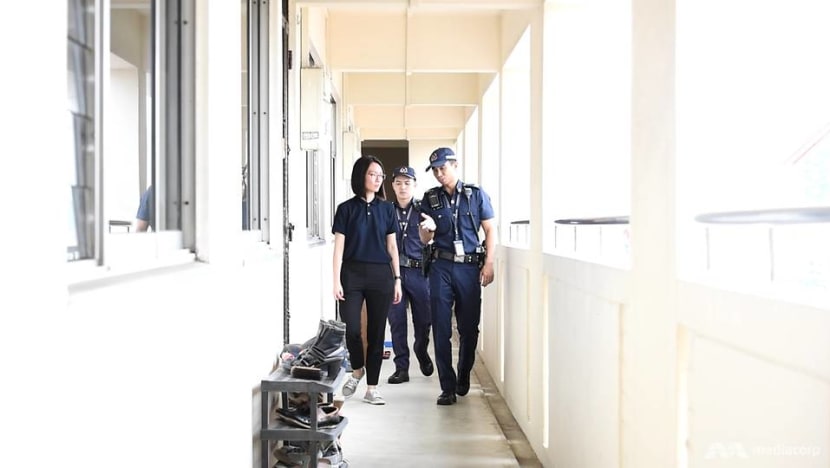
GRF officers, or more commonly referred to as neighbourhood policemen, perform a wide range of duties from street patrolling to manning police counters and are usually the first responders to 999 calls.
For my two-day attachment, which includes a 12-hour day shift and a night shift, I was assigned to follow SGT Kamal and SGT Shaun Goh.
Our key task was to patrol the streets of Geylang.
When we reached at around 8am, the area seemed relatively peaceful. Shophouses along Geylang Road were opening for business while ordinary folk got ready for the day.
Nothing out of the ordinary, I thought.
But according to the police officers, those working as “lookouts” for criminal activities such as illegal gambling and contraband cigarette peddling were already out and about.
“It’s their body language and facial expressions. You can always tell if they have something to hide,” SGT Goh told me, while keeping an eye on the surroundings and paying attention to his walkie-talkie.
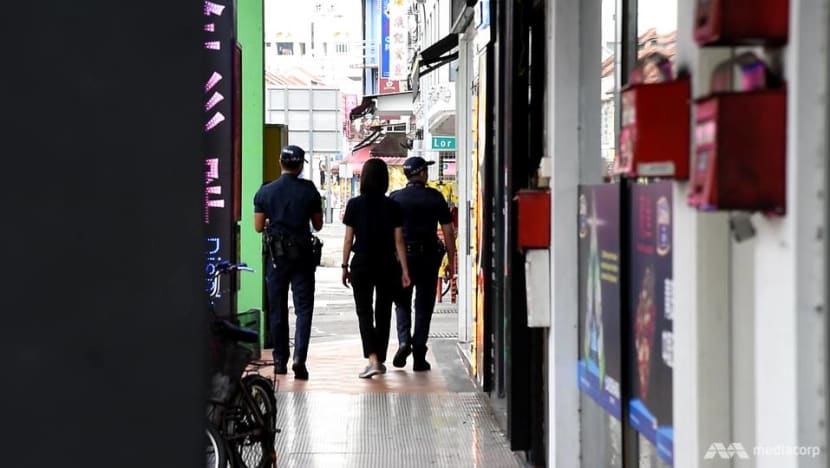
Years of on-the-ground patrolling had made both policemen skilled multi-taskers and what my untrained eye failed to pick up, they did.
It also did not take me long to realise that effective patrolling required a thorough understanding of the area. While this could be achieved over time, “there’s no time to learn slowly” when it comes to Geylang, according to SGT Goh.
“The learning curve is steep,” he said, referring to each street in Geylang and its associated illegal activity. “You just have to pay attention to what everyone is doing and keep up.”
And that I tried, as slowing the police officers down in times of emergency or during critical moments is the last thing I’d want to do.
But there were times when I was left trying to catch up.
Once, the officers made a dash across Lorong 12 and into a back alley after spotting a man on an e-bike whom they suspected was a “lookout”. I had been oblivious to the man who, according to the officers, had been trying to evade us whenever we were near.
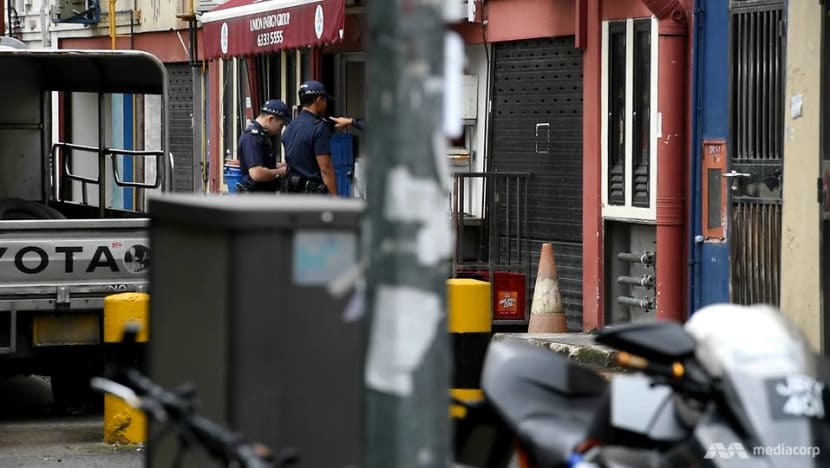
A few hours later, I found myself sprinting across Geylang Road as the officers spotted another man for the same reason.
This time round, the man was less cooperative. When asked for his identity documents, he pretended he did not have them with him and feigned ignorance for other questions. Later, he attempted to snatch his passport back from the police officers, prompting both officers to grab hold of his arms while issuing him stern warnings.
Standing at just an arm’s length away from the man, my heart was pounding and I contemplated if I should take one step back.
Despite these incidents, SGT Kamal told me that Geylang is now “less chaotic” compared to when he first started patrolling the area five years ago, with a step-up in enforcement efforts over the years being the key reason.
An inter-agency operations centre, which allows multiple government agencies to plan and execute operations, was set up at the Geylang NPC nearly two years ago.
Since April 2016, "multi-skilled enforcement teams", comprising auxiliary police officers from various law enforcement agencies, have conducted "high-visibility patrols" at Geylang, according to Minister for Home Affairs and Law K Shanmugam’s written reply to a parliamentary question on Jan 9 last year.
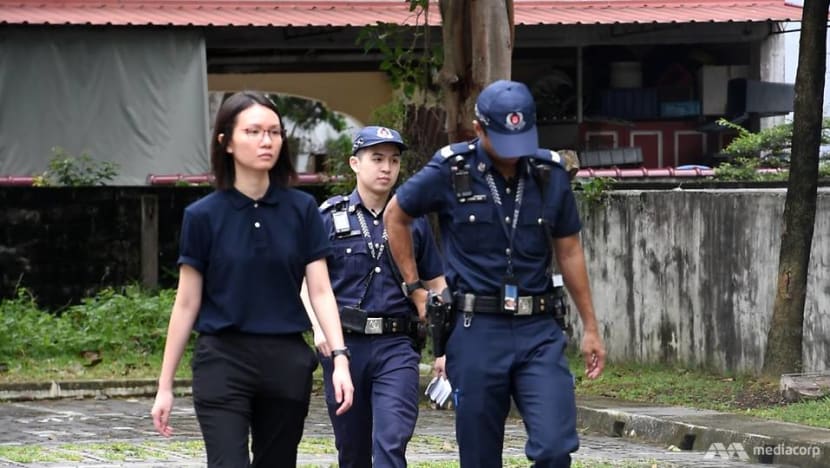
The authorities have also tapped technology to enhance enforcement efforts at Geylang.
More than 170 police cameras have been installed in the area since 2015 – a four-fold increase from 2014. Together with increased street lighting, these steps have helped to “enhance the deterrence and detection of illicit activities at back alleys and side lanes”, Mr Shanmugam said.
Serious crimes reported in the area, including robbery and snatch theft, fell to 77 cases in 2016, a 42 per cent decline from the 134 cases in 2013. Public order-related cases, such as affray and serious hurt, also declined 27 per cent over the same period of time, said Mr Shanmugam, who stressed that more can be done to address other offences and social disamenities in Geylang.
One of the most recent police operations in Geylang was the arrest of 19 men last month, which is probably why patrols in the area feel like an endless cat-and-mouse game.
“Lookouts”, with their Bluetooth headsets, mobile phones and sometimes e-bikes, keep watch by taking strategic positions at coffee shops or entrances to specific side streets like Geylang Lorong 16, which is known for illegal gaming activities and peddling of contraband cigarettes.
Some, like the man in black who was spotted by SGT Kamal, follow police officers around though they usually stop after their covers are blown.
But one thing was for sure: While we had our eyes on them, they too were watching us.
INJURIES APLENTY
Needless to say, Geylang is an area where people are not exactly the most compliant or respectful of police officers.
As we did our foot patrol, every nook and corner seemed to have an injury-related memory for the officers in blue.
For SGT Kamal, a flight of stairs facing Geylang Road was where he and his partner were splashed with water and pushed to the ground by an accomplice of a man they found with a packet of heroin in his shoes.
The man and his accomplice ran away but SGT Kamal soon caught up with the man and wrestled him to the ground in the middle of Geylang Road before the officers arrested him.
In another alley, an accused had tried to grab SGT Kamal’s revolver when they were locked in a scuffle.
Both incidents resulted in bruises and scratches for the 32-year-old.
And when we passed by Lorong 25, both sergeants recalled an incident where a man splashed kerosene on another team of police officers from Geylang NPC. Desperately resisting arrest, the man was holding a cigarette and threatening to set the officers on fire.
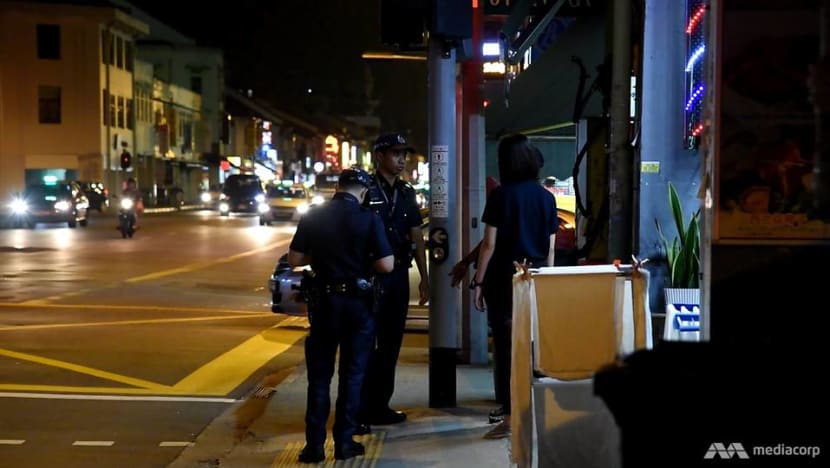
The sense of hostility towards policemen in Geylang also extends to verbal abuse as I found out during my overnight shift on day two.
In one of the back alleys, we met one of the men we screened on the first day. Riding past me and towards the officers, he muttered “belah”, which means “go away” in Malay, before riding off quickly.
The tauntings are common, said SGT Kamal, who recalled being berated with racial slurs by a drunken man a few years ago.
To be sure, this is not unique to Geylang.
Across Singapore, cases of abuse against police officers have been on the rise, said Mr Shanmugam at a Home Team Academy awards ceremony last September.
Noting a 65 per cent increase in physical and verbal attacks against officers from 2014 to 484 cases in 2016, the Home Affairs Minister noted that authorities have “zero tolerance” for such abuse cases.
As such, his ministry has been working with the Attorney-General's Chambers to press for harsher sentences against those who prevent officers from carrying out their duties, Mr Shanmugam added.
However, the harm caused by malignant words does not diminish when they are delivered via the Internet. The rising tide of vitriol online, such as those found in the comments section on websites and social media, can also have a demoralising impact.
Said SGT Goh: “Sometimes I feel especially affected when I go online and see in the (comments section), people bashing the police force for no reason at all.
“Being human means you’ll have a strong urge to rebut these people but I guess so long as the Internet exists, everyone will have something to say. So despite feeling angry, I’ve learnt to just read and move on."
RESPONDING TO 999 CALLS
Our patrolling duties also extended to crime-prone HDB blocks and car parks. To my surprise, quite a number of drivers left valuables, such as CashCards or GPS devices, in open view when they leave their cars, making them vulnerable targets for theft.
What the police officers would do in such instances is to note down the cars' number plates and submit them to relevant authorities, which would then notify these drivers.
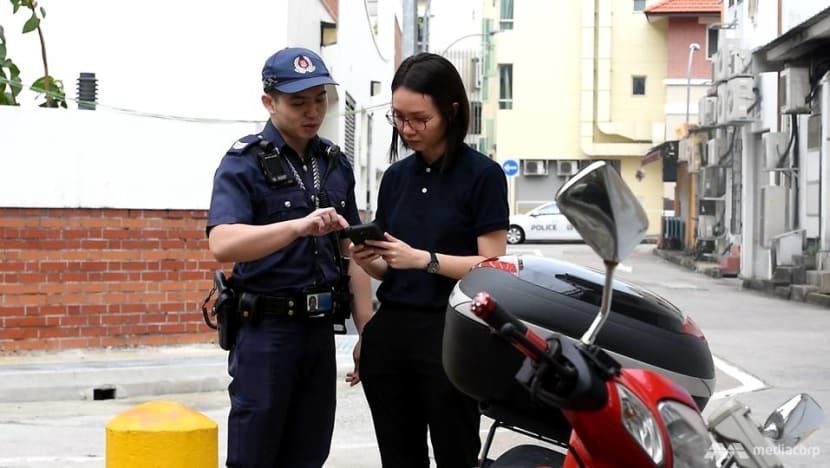
We were also dispatched to respond to 999 calls, which seemed to increase during the night shift. As messages about new cases came through, we found ourselves zipping to and fro Geylang and the other neighbourhoods.
Cases we attended to range from incidents at the HDB estates, such as accidents, complaints of noise pollution and littering, to a dispute over a summon issued to a man for littering.
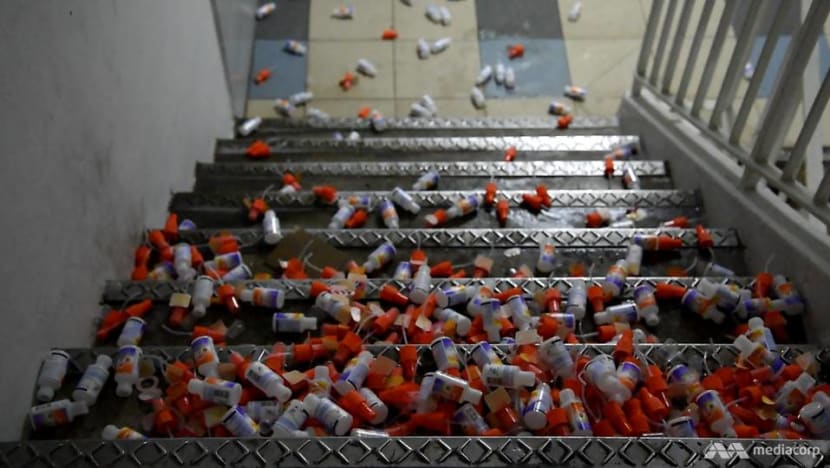
During our night shift, we were also activated to serve as reinforcements for the arrest of a drug addict along Haig Road. The man, believed to be a repeated offender, was found with packets of heroin and was nabbed on the spot by plainclothes policemen.
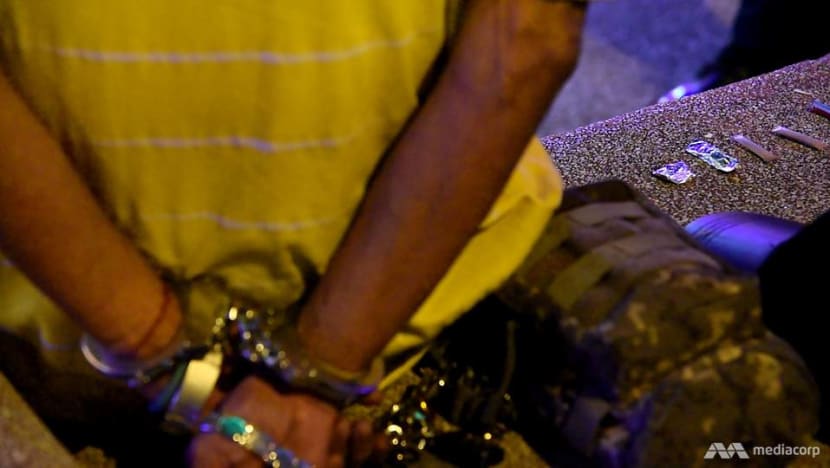
Later on at around 2am, we were activated to a hotel in Geylang where a Singaporean man was arrested for dealing with contraband cigarettes.
However, these calls could be false alarms sometimes.
While patrolling, we were notified of an urgent call about a suspicious character spotted at Upper Boon Keng. But after rushing back to the police car, we were told that it was a nuisance call.
This, unfortunately, is part and parcel of the police’s day-to-day work, said SGT Kamal.
According to figures from the Ministry of Home Affairs, the police received an average of about 1.3 million 999 calls annually between 2014 and 2016. This amounts to slightly more than 3,500 calls every day.
In a written reply to a parliamentary question on Aug 1 last year, Mr Shanmugam noted that only about 40 per cent of these calls required direct police intervention and police resources were dispatched.
The remaining calls were either nuisance calls or misdirected calls that did not require police attention, such as complaints about the cleanliness of common properties.
Still, the officers stressed the need to treat each case, even the seemingly mundane calls, with importance given the unpredictable nature of their work.
“Sometimes, when the case messages come through, you may not expect it to be a serious case but it could suddenly escalate,” said SGT Goh.
“You have to stay focused because there are certain decisions that you make at crucial moments that if you didn’t, will have greater repercussions.”
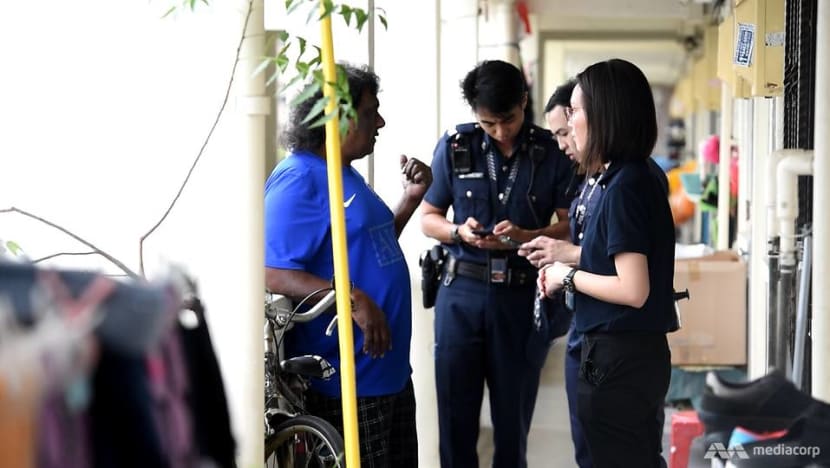
LONG HOURS ON THE JOB
While most parts of police work are unpredictable, one thing remains constant: The long hours on the job.
A typical shift for an NPC officer is 12 hours long. This excludes team briefings before and after each shift, as well as preparation time for the loading of firearms and other necessary equipment.
Police officers usually get assigned to a day and a night shift before being given two days off.
On my first day, I arrived before dawn and knocked off at about 9pm. Needless to say, hours of foot patrolling and the need to maintain constant vigilance left me physically and mentally drained.
The following day, it was another 14 hours on the job. Staying sharp through the gruelling wee hours of the overnight shift was particularly difficult for me but for the officers in blue, work goes on be it day or night.
“You just learn to deal with it,” said SGT Goh, recalling his first day at work nearly three years ago.
“It was a day shift but I remember returning back to the station at close to 10pm. I was shocked that I ended work so late and it was only my first day.”
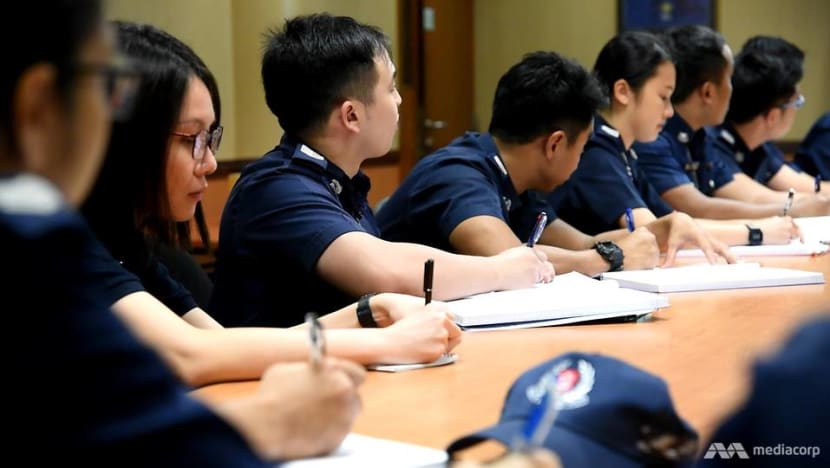
And due to the long hours, sacrifices, such as quality time with loved ones, are inevitable.
“My father had been sick but one day, he suddenly asked if I wanted to go out with him. I told him I couldn’t because I had to work,” recalled SGT Kamal. “Three days after, he was admitted to the intensive care unit and passed away.”
Since then, being able to return home to his family at the end of each work day is the biggest source of contentment for SGT Kamal. Especially since his mother, who initially objected to his career choice, has relented and given him her blessings.
“My mum wanted me to have an office job but I secretly signed up to be a police … She has accepted my work but I think she still hopes that I can be posted to another neighbourhood or department.
“I always try to explain to her that if I do my job well, I’ll be safe. Otherwise, I’d just go home in long sleeves,” SGT Kamal said with a laugh, referring to how he would wear long-sleeved shirts or pants to hide his bruises.
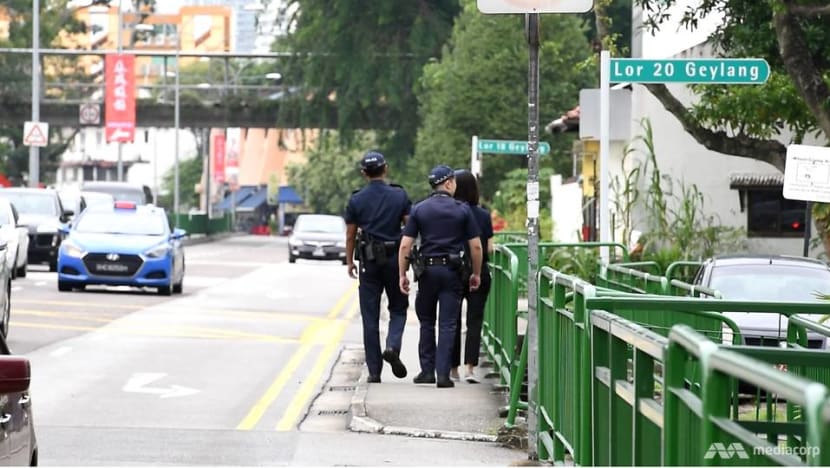
Other sources of job satisfaction can also be a simple “thank you” after an incident is resolved or a friendly “hi” from members of the public.
Given the neighbourhood that they patrol day to day, it’s not difficult to understand why.
While rare, SGT Goh said he has met people, usually senior citizens, who asked if he’s had time for meals.
“Bits of appreciation like these do make me feel a little better when I’m on duty.”
This reminded me of an encounter on my first day. We were walking by a bus stop along Guillemard Road when a little boy sitting on one of the seats and accompanied by his parents shouted: “Hello police, how are you?”
His voice filled with a tinge of excitement.
Brows furrowed in concentration as he patrolled, SGT Kamal’s face relaxed upon hearing that.
To the beaming kid, he smiled and waved back: “Hello!”












